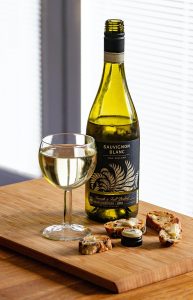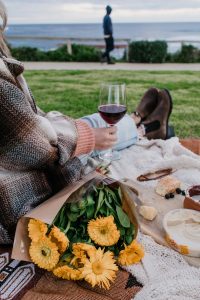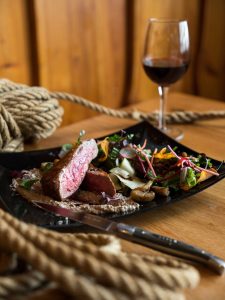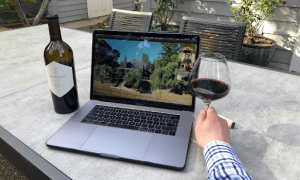BLOGS
The Best Wine for Every Occasion
In many ways, bringing wine to a social gathering is somewhat like a rite of passage. From the moment you first bring the best wine to the right gathering, you’ve proven that you have the grace, forethought, and skill in maneuvering complex social situations. On the contrary, not bringing any—or worse, bringing the wrong kind—might lower people’s expectations of you.
Now that you know just how important it is to bring the best wine to an event, you might be eager to learn which wine to pick. Unfortunately, there’s no single answer to this question, as there are literally hundreds to choose from depending on your specific situation.
Luckily for you, that’s exactly what we’re here for. In this article, we’ll provide a quick but comprehensive guide regarding what type of wine goes best for every casual and fine dining occasion.
Know Your Lingo: The 6 Most Common Kinds of Wine
There’s nothing classier and more luxurious than busting out a bottle of wine to go with dinner or to celebrate an occasion. But wait—how exactly do they differ from one another? This section will discuss the six main categories that wines will often fall under.
White Wine

So-called because of their distinctively white coloration, white wines are made from green-skinned grapes.
These grapes produce colorless juice that is noticeably lacking the tannins–basically nature’s bitter-tasting coloring agent–that characterize their equally lovable cousins, the red wines. To ensure that absolutely no tannins will be carried over to the final product, the grape skins, where the majority of tannins can be found, are removed during the fermentation process.
White wines can be made in a wide variety of styles. From sweet to dry, floral to fruity, spicy to sweet, or creamy to rich, there’s likely a white wine that fits the bill. This type of wine tends to emphasize the nuances of fruit mixtures, as well as leverage the acidity of the fruit for a more refreshing feel.
Two of the most well-known white wines are Pinot Grigio and Sauvignon Blanc. Pinot Grigio, also called Pinot Gris, is a crisp, dry, light-bodied, wine with a sweet taste, with just a hint of bitterness in its flavor. It’s good for light drinking and goes well with salad, poached fish, and mild cheeses. It’s also one of the most popular wines in the United States.
Sauvignon Blanc, in turn, is a dry, light, tart white wine that carries an aggressively citrus flavor and distinct herbal undertones. It goes well with most meat like fish, pork, veal, and chicken, as well as French cuisine, among others.
Red Wine

While white wine doesn’t have tannins, red wines are specifically made to extract the color–and thus the flavor–from the grapes’ tannins.
This means that red wine is made from dark-colored grapes, which are often purple or blue. The grape skins are not removed as the grapes are pressed, so the entire concoction is suffused with the characteristic red-to-reddish-purple color.
Just like white wine, red wine can be created in different styles–from spicy to savory, from light to full-bodied, from savory to fruity.
The two most popular varieties of wine in the world are Bordeaux and Chianti. Bordeaux is a catch-all phrase for any red wine that is made from Bordeaux, France, but which is typically made out of several distinct varieties of grapes such as merlot, cabernet franc, and cabernet sauvignon. The taste is generally dry and can range from full to medium-bodied. It’s rich with flavors of dark-colored fruit, such as black currant and plum.
In the same vein, Chianti wine is any wine made in the Chianti Region of Italy. The majority of red wine mixes in that area use the Sangiovese grape–a type of grape indigenous to Tuscany– as a base, although some other types of grapes are mixed in small quantities. Chianti wine is known to be very acidic, with high contents of tannins that make it ideal to pair with food. Over time, it tends to acquire earthy notes, but younger expressions of this wine favor red fruits such as raspberry, plum, or red currant.
Rosé Wines

Rosé wines are somewhat the middle ground between white and red wines. Although this type of wine is made out of dark-colored grapes the same way that red wines are, the grape skins aren’t exposed to the juice. This results in a pinkish tint in the final product, which some might describe as ‘rosy’ or ‘blushing’.
These types of wines are made all over the globe and can range from syrupy-sweet to a drier, lighter-bodied taste. Modern European iterations of the flavors are decidedly drier than traditional Spanish or Italian wines.
Rosé wines, in general, are simply a subtler version of red wine. While a glass of rosé doesn’t quite have the richness and complexity that a glass of red wine has, it’s more flexible and lighter to drink. It’s best served chilled, making it the perfect drink to cool down in style during the summer months. Since its flavor profile isn’t too overpowering as well, rosé is more versatile than red wines in terms of food pairings.
Sparkling Wine

You might already have an idea of what this type is, and you would probably be right. The term ‘sparkling wine’ is a catch-all term for any type of wine that is carbonated, thus acquiring its ‘sparkly’ taste.
Without getting too complicated, sparkling wine can be made in two ways. The first one is by carbonating the wine through a second fermentation process in a unified tank where a lot of wine can be carbonated all at once. The second is by carbonating it in a glass container and then transferring it to a unified filtration tank.
Sparkling wine gives off an easy-to-drink, celebratory atmosphere. Regardless of how they are made, they actually have rosé, red, and white iterations. Perhaps some of the most famous types are Champagne and Prosecco. Champagne originates from the Champagne region in France, while Prosecco hails from Italy.
Regional Wines

Some of the wines already mentioned are already regional wines. As one might have guessed, regional wines are simply those that are made in a specific region in the world. Some of such wines are Bordeaux and Burgundy wine, and the recently-mentioned Champagne.
This is made possible through ‘appellations’, which, at the risk of oversimplifying, functions quite like a patent for wines.
Appellations seek to tie wines to a specific place to stop them from becoming generic. It’s an indication of location, originality, and, to some extent, quality. For example, a sparkling wine made through the same process and with the same materials as Champagne cannot be legally called Champagne, if it’s not made within the region.
Fortified Wines
Fortified wines are exactly what they sound like: they are made stronger with a bit more alcohol content. This is done by adding more grape spirit during the fermentation process of the wine, bringing up the alcohol content to 17-20% of the volume.
It can be made from either red or white wine and generally tends to be on the sweeter side, ranging from semi-dry to fully sweet. Sometimes, as in the case of Vermouth, botanicals and herbs are also added to modify the overall aroma of the wine.
Some of the more popular fortified wines are the Sherry, Port, Marsala, and Macvin varieties.
There’s a Wine for That: Which Wine to Pick For What Occasion
Now that we know the basic categories of wine, we can now apply that knowledge in picking the best wine to go not just with food, but with any worthwhile event.
Red on Red: Red Wine for Red Meat

Red on red isn’t just a general fashion statement—it also works well for food. Say you’re about to host a classy steak dinner at your South American-themed luxury home in Georgia Club or Augusta, which wine should you serve? Well, since you’re serving red meat, red wine is the way to go.
A red Bordeaux is our main suggestion. Most entry versions will be based on merlot grapes with a little bit of cab mixed in. The merlot will bring out the well-rounded texture of the red wine on your palette, perfectly blending it with the earthy and savory taste of cab.
Red Bordeaux is hard to get wrong, especially when paired with red meat. It’s widely available, relatively cheap, and the complex flavor of the tannins will blend wonderfully with the rich fat of the red meat.
The general rule is, the leaner the meat, the lighter wine you choose. If lamb is on the menu, lighter tannins may be called for, such as Petit Verdot.
Fruity and Fiery: Refreshing Dry Wines for Flavorful Barbecue Sauce
Maybe you own a luxury house and lot in Crosswinds Tagaytay, and you want to show off your incredible outdoor view to your visiting family and friends. The sun is shining, the signature Tagaytay breeze is blowing, and all that is lacking is the wonderful smell of outdoor barbecue—which, of course, wouldn’t be complete without a suitable wine to pair with it.
In this case, opt for dry, fruity wine such as Syrah or Malbec. This is because barbecue sauce will have a lot of spices in them, and you wouldn’t want this rich taste to clash with more complex wine.
In addition to this, Syrah and Malbec both have medium bodies, which means they contain medium acidity and tannin levels. They are light, fruity, and well-structured, enough for them to remain refreshing while still allowing you to appreciate the flavor. Syrah in particular will go along marvelously with grilled lamb and barbecue pork, while Malbec can go with almost any kind of meat from chicken leg to lamb.
Sparkles for Celebrations: Champagne or Prosecco for Joyous Events
It’s hard to determine exactly where the strong association between sparkly drinks to celebrations started, but it is undeniable that this association is well and truly established in today’s modern world.
Any kind of celebration can be heightened by the presence of these easy-to-drink, sweet-tasting beverages, whether it’s a wedding, birthday, or even just a celebration for recently buying your dream home from a list of luxury homes for sale.
Regardless if you’re celebrating inside or outside your luxury homes, you can choose either of the two famous sparkling wine brands to complete the feast, Prosecco and Champagne.

Prosecco is generally more affordable and more taste-friendly as it leans towards the sweeter end of the scale. Its refreshing fruity taste plays well with cured meats, Asian dishes, and fruit-based appetizers.
On the other hand, Champagne is on the upscale, drier side. It has a more acidic taste, so it goes well with meat such as oysters, shellfish, grilled chicken, and even non-meat items such as pickled vegetables.
Rosé is Sweet and Uncomplicated, Just Like Love Should Be
When you’re on a date, you’d want something delightfully light, sweet, and romantic. In that case, rosé should be your go-to wine for the occasion.
Rosé is uncomplicated, plenty sophisticated, safe for most taste buds, and just enough for both parties not to get sloshed on the first bottle.
Nevertheless, the changing dynamics of a date means that one should learn to adapt, as well. Rosé is good for the pre and post-meal banter, but during the meal, it’s best to pair your wine with the food you are eating. The rosé could be enough, but you might also want to consider a full-bodied red wine if dining on red meat, as we mentioned above.
The important thing is to be dynamic, with the romantic rosé as your base.
Warm Up the Winter Festivals With Mulled Wine
Too often, the festive cheer of the winter holidays is dampened by the rainy season. To mitigate this, try mulled wine. This is a beverage made with red wine and blended with mulling spices and served hot. A sip will warm you to your bones, and since it’s not as sweet as you might expect, you can drink more of it without getting tired of the taste.
Mulled wine is perfect for those peaceful Christmas season evenings when you’re bonding over at-home Christmas activities, or even just spending a quiet time with your family in the comforts of your luxury homes waiting for the good day to arrive.
Choosing the Best Wine For Every Occasion
Wine is a beverage that should be enjoyed by everyone, especially if you’re a resident of one of the best luxury homes in the Philippines. The rich notes and sophisticated sensations exude a taste of luxury and will serve to heighten the experience of anyone who drinks it.
You don’t have to be an expert to truly enjoy this time-honored beverage. If you apply the knowledge from this article appropriately, then you will soon be bringing the best wine to every occasion.
Many of us have missed different occasions, such as meeting with friends and enjoying other outdoor activities. COVID-19 has left us to stay at home and taught us to do the things we love while staying safe at home. One of the many outdoor activities you might miss is visiting wine bars and enjoying wine with friends. Didn’t you know that you can host your perfect virtual tasting at home? It may be slightly different from face-to-face wine tasting, but you will discover its advantages when you start your virtual wine tasting at home.
NAPA at Crosswinds
Brittany knows your dilemma. That’s why they established a restaurant that is inspired by the NAPA valley in California. While Crosswinds Tagaytay is known for its Swiss-inspired residences, a newly-opened place in the area will transport you and will give you a glimpse of another side of the world. With its rustic wooden décor, calm environment, and stunning outside dining area, this new café, inspired by rural residences in Napa Valley, California, will make you feel like a vineyard owner.
Why Should You Visit NAPA at Crosswinds?
People from every place want to visit this newly-opened café at Crosswinds. The ambiance will get you into the other side of the world with a taste of luxury and relaxation. With wooden floors, rustic décor, and a fantastic view of the surrounding hills, the café seems like a home. Everyone wants to see this new fashionable establishment, and it becomes crowded quickly. If you’re going to enjoy the place, its food, and take photos, arrive early.

Feel the Tagaytay breeze as you sip your wine at NAPA.
NAPA at Crosswinds welcomes its guest with a huge parking lot where customers coming from a long ride can park their bicycles. A unique NAPA will greet the customers at Crosswinds gate. Around the place, there are wooden benches that will invite you to enjoy the scenery. Some barrels surround the area that can be used as tables and unique chairs.

Enjoy al fresco dining with tasteful, quirky decor only at NAPA.
You can choose from their wide range of food, including coffee, cheese, meat, and wine. The whole place is instagrammable. That’s why people are going crazy about NAPA at Crosswinds. Although it’s hard to get a good seat, the best seats would be near the windows and outside the balcony because the scenery will welcome you. Tourists like to sit upstairs to get a good view of the whole Crosswinds and take some good photos.
The café provides excellent food and drinks and a pet-friendly café that caters to your pet and pet parents’ need for relaxation. Pets are allowed outside but not inside the café. The café also offers free WI-FI, which you can request from the staff at the counter and have it get done in your gadget.
NAPA at Crosswinds gets more attractive at night. It gives out a romantic ambiance perfect for couples who want to spend time together and families who want to sit down and talk about life. Fairy lights are beautifully spread in the area that adds to the serenity mood of the place. Aside from the scenery, NAPA provides delectable food in an alfresco setting perfectly paired with Tagaytay’s chilly weather at night and glasses of wine.
Still haven’t experienced the NAPA Valley-inspired experience? Don’t forget to add NAPA at Crosswinds in your next adventure.
If you are likely to stay at home because of the pandemic, you don’t need to worry because you can still experience a beautiful wine tasting at home and enjoy it with the rest of your family. This blog, we will give you some tips on hosting a perfect virtual tasting at home.
What is a Virtual Wine Tasting?
Some other outdoor activities can’t be adapted to our homes, and there are plenty of things we can still do in the comfort of our homes. It may not be as perfect and as enjoyable as what it offers in the natural setting, but what’s beautiful about it is that we can always try and tweak it to our liking and preference. Sound exciting? Keep on reading as we go ahead and list down tips on how to host a perfect virtual wine tasting at home.

Have your virtual wine tasting at NAPA in Crosswinds Tagaytay. | Photo by WineDirect
Before going into hosting a virtual wine tasting, let’s start by identifying this new concept. The pandemic has brought several changes to the way we live our life even with some of the activities we enjoy. Virtual wine tasting is similar to a regular tasting where participants taste and learn about different wine selections from a winery. Both regular and virtual wine tasting has the same purpose except how they will perform the wine tasting. Rather than going to a winery, the winery comes to you. Wineries handle the entire experience in both circumstances. It is their responsibility to manage the wine shipment and ensure that it arrives on time. The organizers will then provide additional information on how to participate in the virtual wine tasting and platform capabilities for a better experience.
How to Host a Virtual Wine Tasting at Home
Set Date and Time
In every activity, the first thing you need to consider is the availability of your virtual wine tasting participants. Ask each participant if when is the perfect time to enjoy and taste their wines. Instead of selecting a day and time for yourself, allow your audience to do so. Nowadays, there are so many online platforms today that can be used to your advantage. Consider utilizing a tool that will enable you to choose a date and time that works for everyone to prevent the back-and-forth texting from seeing when everyone is available.
Choose a tasting theme.
Choosing and deciding what wines you want to taste in your virtual wine tasting is also a top priority.
1. The regional Wine tasting theme means participants are only going to taste wines from a particular region.
2. A vertical tasting necessitates a little more work because it contains a producer’s wine from different years. The most important aspect of a proper vertical tasting is to ensure that the wine bottles have been appropriately preserved. However, suppose you successfully put together this type of tasting. In that case, the results may be fantastic, as your audience will learn about a winemaker’s style while also being familiar with several vintage types and how they have developed over time.
3. Horizontal tasting is a popular concept in both virtual and real-life wine tastings. It includes wines from several producers that were produced in the same year. Because all new releases can be added, it provides additional flexibility.
4. When evaluating different varieties of grapes, such as Pinot Grigio, Shiraz, Chardonnay, or Pinot Noir, blind tasting works best. It can be used as an icebreaker for large-group virtual wine tastings. The wine labels are hidden, and participants must estimate the nation, grape, and even price range based on the wine’s flavor.

There are different types of wine to choose from when doing a virtual wine tasting. | Photo by Napa Valley
Custom shipments for your participants
All of the essential supplies are provided for an in-person wine tasting. Why not customized shipments for your participants? Allow your audience to pre-order their wine supplies to make things easier. You can add a variety of wines to try, meal combinations, and possibly some wine glasses in each bundle. You can have it posted on your website and make your audience choose. Use a tool that can view their choices in real-time.
Decide what platform to use.
Deciding on what platform to use is also a priority. There are a lot of platforms which depends on how large your participants you are going to host. Choosing the best platform for your audience should be well taken care of because this is where your audience will interact and exchange their thoughts.
Adapting to new normal experiences can sometimes be challenging. But as time goes by, little by little, we’ll get used to it. We will be surprised that it’s no longer new to us one day because we have already embraced it and have come to live through it. Who said that regular wine tasting and other regular outdoor activities couldn’t be replicated in a virtual environment? The pandemic may have hindered some of our plans, but people are also taught to respond and act differently. Many physical locations, including wineries and other stores, remained closed due to the pandemic; virtual events have been on the rise and busy. The virtual environment is a new way of interaction and a unique place of growth and learning. It won’t be perfect on the first try, but we can continuously improve.
Read Next: Explore Paso Robles with The Paso Wine Fest
Read Next: Expensive Wine for the Affluent























